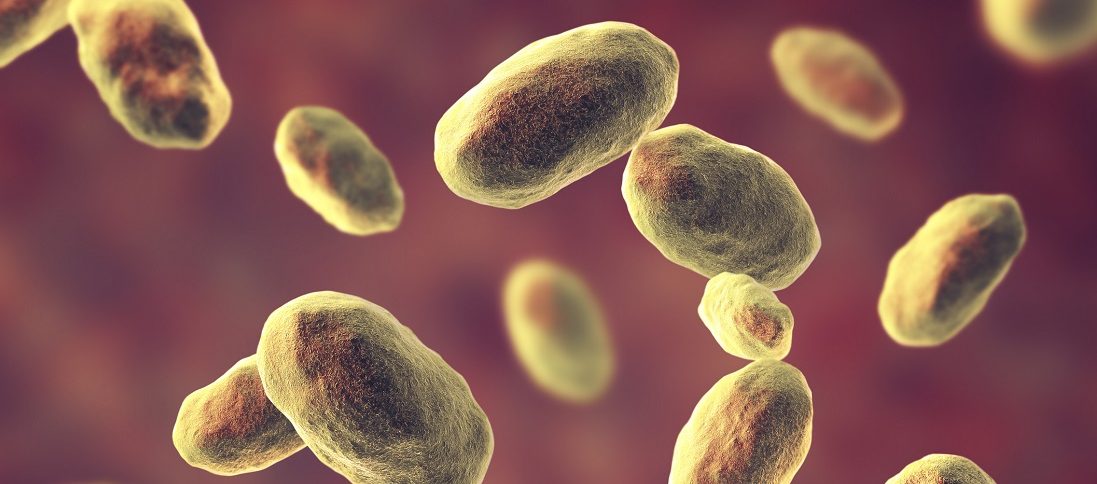Relationship of humans and food goes way beyond thousands of years. We all know how food can impact humans in many ways. However, the way we understand food safety may only be completely understood in the last few centuries. Health screening nowadays also emphasizes the importance of knowing what kind of food or diet a person has eaten. One of the many diseases that can affect humans through food consumption is Yersiniosis.
Yersiniosis is an infection most often caused by eating raw or undercooked pork contaminated with Yersinia enterolitica bacteria. In uncommon cases, it can be caused by Yersinia pseudotuberculosis. Uncommon cases arose from eating contaminated vegetables. It is estimated that this bacteria has caused at least more than 117 000 illnesses and 35 deaths in the United States alone every year. Children are easier to fall sick from these bacteria. Infection is much more common in the winter.
Pigs are the most important reservoir for Yersinia enterolitica to live on. Yersiniosis is often related to raw or undercooked pork. At times, it can be from cross-contamination of other food items during handling of raw pork. Both domestic and wild animals are natural reservoirs for this bacteria. Surprisingly, there were cases reported in Yersinia in Norway and New Zealand from untreated drinking water contaminated with the bacteria. There are also case reports of infection from an infected household pet and through transfused blood products, although this is considered rare. Yersinia bacteria are able to survive at low temperatures. Temperature in the refrigerator in general is insufficient to prevent its growth. Even so, thorough cooking can kill the bacteria in food.
Symptoms of yersiniosis can vary depending on the age of the person affected by the bacteria. Common symptoms in children include abdominal pain, fever and bloody diarrhea. In older children, they may experience pain on the right side of the abdomen and this may be confused with appendicitis. This is because patient might have symptoms that mimic appendicitis such as fever, vomiting and diarrhea, aside from the pain of the right side of the abdomen. Symptoms typically develop 4 to 7 days after exposure to the bacteria. Symptoms may last 1 to 3 weeks longer. Joint symptoms such as inflamed joints or joint pain may appear a week or two after the initial symptoms. Joint symptoms often involve the large joint and may last for a month to 4 months. Another symptom of Yersinia is tender red bumps (erythema nodosum) appearing 2 to 14 days after abdominal pain. This skin lesion is more common in adult females and usually goes away on its own.
Treatment for Yersinia is typically emphasized on ensuring patients are hydrated well and get their nutritional support. Doctors will prescribe antibiotics to help speed up the healing process and to kill the bacteria. Sometimes, surgery may be needed to drain pus in the abdomen (abdominal abscess). In certain case, due to its similarity with appendicitis, surgery often so is done with the appendix looking normal but with signs of inflammation to the mesenteric adenitis (mesenteric lymph nodes) This will be confirmed with pathology study to know the underlying cause for such findings.
The best way to prevent this disease is to take preventative measures. Handwashing after exposure to an exposed animal and safe food processing is very important to break the cycle of the infection from spreading, especially among those working directly with slaughterhouses or processing pork products and food handlers. People need to avoid raw consumption of pork and its product. It is best to make sure the food is properly cooked before consumption. Since some cases also involve consumption of contaminated water, having routine water treatment and disinfection can help reduce the likelihood of the bacteria to be in the water. Proper washing and peeling of vegetables in home kitchens not only reduce risk for Yersinia but also many other infections associated. Last but not least, screening for the bacteria in blood and blood products is important to avoid more people being affected by the bacteria.
In most cases of people infected by Yersinia, the outcome is good as many patients can get better with less chances for deaths. It is reported only around 1.2% of Yersinia cases die from the disease. However, people diagnosed with Yersinia may be at risk for complications such as inflammation to heart (myocarditis), inflammation of kidney (glomerulonephritis) and skin inflammation (dermatitis). In severe cases, the bacteria can spread to the bloodstream and cause many other diseases such as pus in the lung (lung abscess) and kidney (renal abscess).
In essence, Yersinia is most often caused by eating raw or undercooked pork and its products. Yersinia enterolitica is the common bacteria causing the disease. Children are more likely to be infected by the disease compared to adults. The best way to prevent Yersinia is to take preventative measures.







